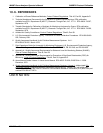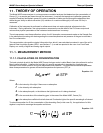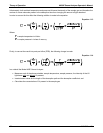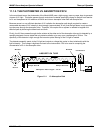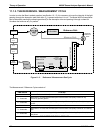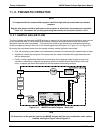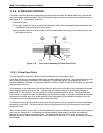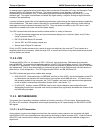
M400E Ozone Analyzer Operator’s Manual Theory of Operation
11.1.4. INTERFERENT REJECTION
The detection of O
3
is subject to interference from a number of sources including, SO
2
, NO
2
, NO, H
2
O, aromatic
hydrocarbons such as meta-xylene and mercury vapor. The Model 400E’s basic method or operation
successfully rejects interference from most of these Interferents.
The O
3
scrubber located on the reference path (see Figure 11-2) is specifically designed ONLY to remove O
3
from the sample gas. Thus, the variation in intensities of the UV light detected during the instrument’s
measurement phase versus the reference phase is ONLY due to the presence or absence of O
3
. Thus, the
effect of interferents on the detected UV light intensity is ignored by the instrument.
Even if the concentration of interfering gases were to fluctuate so wildly as to be significantly different during
consecutive reference and measurement phases, this would only cause the O
3
concentration reported by the
instrument to become noisy. The average of such noisy readings would still be a relatively accurate
representation of the O
3
concentration in the sample gas.
Interference from SO
2
, NO
2
, NO and H
2
O are very effectively rejected by the model 400E. The two types of
Interferents that may cause problems for the Model 400E are aromatic hydrocarbons and mercury vapor.
AROMATIC HYDROCARBONS
While the instrument effectively rejected interference from meta-xylene, it should be noted that there are a very
large number of volatile aromatic hydrocarbons that could potentially interfere with ozone detection. This is
particularly true of hydrocarbons with higher molecular weights. If the Model 400A is installed in an environment
where high aromatic hydrocarbon concentrations are suspected, specific tests should be conducted to reveal the
amount of interference these compounds may be causing.
MERCURY VAPOR
mercury vapor absorbs radiation in the 254nm wavelength so efficiently that its presence, even in small
amounts, will reduce the intensity of UV light to almost zero during both the Measurement and Reference
Phases rendering the analyzer useless for detecting O
3
.
If the Model 400E is installed in an environment where the presence of mercury vapor is suspected, specific
steps MUST be taken to remove the mercury vapor from the sample gas before it enters the analyzer.
04315 Rev. C1 193



